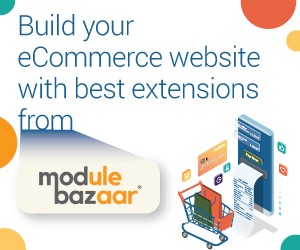In the ever-evolving world of e-commerce, providing a personalized shopping experience has become essential for success. Businesses that can effectively tailor their offerings and interactions to individual customer needs and preferences will thrive as online consumers face a vast array of options. E-commerce personalization is the key to driving customer engagement, increasing conversions, and fostering long-term brand loyalty. By leveraging data-driven insights and advanced technologies, e-commerce businesses can deliver highly personalized experiences that anticipate customer needs, streamline shopping, and drive greater revenue and customer satisfaction.
In this comprehensive guide, we’ll explore 10 powerful ways e-commerce brands can implement personalization strategies to deliver a truly tailored shopping experience for their customers.
- Personalized Product Recommendations
Personalized product recommendations are one of the most impactful forms of e-commerce personalization. By analyzing a customer’s browsing history, past purchases, and behavior patterns, businesses can suggest products that are highly relevant and likely to appeal to their individual preferences. This not only enhances the shopping experience but also increases the chances of additional sales.
Tools like recommendation engines, collaborative filtering, and machine learning algorithms can power these personalized product recommendations, ensuring customers are presented with the most relevant and enticing options.
- Customized Landing Pages
Rather than relying on a one-size-fits-all homepage, e-commerce brands can create customized landing pages that cater to each customer’s unique interests and browsing habits. This could involve showcasing personalized product selections, highlighting relevant promotions, or providing tailored content and offers based on the customer’s previous interactions with the brand.
By delivering a personalized landing page experience, businesses can capture the attention of their customers, increase engagement, and guide them more effectively toward their desired products or services.
- Personalized Search and Navigation
Streamlining the customer’s path to discovery is crucial in e-commerce, and personalized search and navigation functionalities can significantly enhance this experience. By analyzing a customer’s search history, browsing behavior, and purchase patterns, e-commerce sites can provide personalized search results, autocomplete suggestions, and navigational paths that align with the individual’s preferences and intent.
This level of personalization not only helps customers find what they’re looking for more efficiently but also exposes them to products and categories they may not have otherwise discovered, leading to increased conversion rates and average order values.
- Tailored Email Marketing
Email marketing remains a powerful tool in the e-commerce arsenal, and personalization is key to ensuring these communications resonate with customers. From personalized subject lines and email content to product recommendations and promotional offers tailored to individual preferences, a well-executed email marketing strategy can significantly boost engagement, click-through rates, and sales.
By leveraging customer data, purchase history, and browsing behavior, e-commerce businesses can craft highly relevant and personalized email campaigns that build stronger connections with their audience.
- Personalized Loyalty Programs
E-commerce brands can further enhance customer loyalty and retention by implementing personalized loyalty programs. These programs can offer tailored rewards, exclusive experiences, and personalized incentives based on individual customer behaviors, preferences, and purchase history.
By rewarding customers with personalized perks and recognition, businesses can foster a deeper sense of brand affinity, encourage repeat business, and ultimately drive long-term customer lifetime value.
- Personalized Discounts and Promotions
Offering personalized discounts and promotions can be a powerful way to engage customers and drive conversions. By analyzing individual shopping patterns, browsing behavior, and purchase history, e-commerce brands can deliver targeted promotional offers, such as discounts, coupons, or exclusive deals, that are more likely to resonate with each customer.
This level of personalization not only increases the perceived value for the customer but also helps e-commerce businesses optimize their marketing efforts and ensure they’re providing the most relevant and appealing offers.
- Personalized Product Bundling
Leveraging customer data to create personalized product bundles can be an effective way to enhance the shopping experience and drive higher average order values. By understanding a customer’s preferences, purchase history, and complementary product affinities, e-commerce businesses can suggest tailored product bundles that cater to the individual’s needs and interests.
This personalized approach to product bundling not only improves the customer’s shopping journey but also presents opportunities for cross-selling and upselling, ultimately boosting the overall revenue potential.
- Personalized Customer Support
Beyond the shopping experience, e-commerce brands can also apply personalization to customer support. By gathering and analyzing customer data, e-commerce brands can provide personalized support interactions, such as customized FAQs, self-service resources, and even one-on-one assistance that address the unique needs and preferences of each customer.
This level of personalized customer support not only enhances the overall brand experience but also helps build stronger customer relationships and foster long-term loyalty.
- Personalized Post-Purchase Experiences
The personalization journey doesn’t end at the point of purchase. E-commerce businesses can further enhance the customer experience by delivering personalized post-purchase interactions, such as tailored order confirmations, shipping updates, and product care recommendations.
By continuing to provide personalized touchpoints throughout the customer’s lifecycle, e-commerce brands can maintain a strong connection, gather valuable feedback, and encourage repeat business and brand advocacy.
- Personalized Content and Storytelling
In addition to product-centric personalization, e-commerce businesses can also leverage personalized content and storytelling to create a more engaging and memorable shopping experience. This could include tailored blog posts, videos, or educational resources that align with the customer’s interests and pain points, as well as personalized brand narratives that resonate with individual customer segments.
By infusing personalization into the content and storytelling aspects of the e-commerce experience, businesses can foster stronger emotional connections with their customers, differentiate themselves from the competition, and ultimately drive increased loyalty and revenue.
Conclusion
E-commerce personalization is no longer a nice-to-have; it’s a critical component of delivering a truly exceptional and engaging shopping experience. By implementing the 10 strategies outlined in this guide, e-commerce businesses can unlock the power of personalization, captivate their customers, and drive sustainable growth in an increasingly competitive landscape.
















Add comment